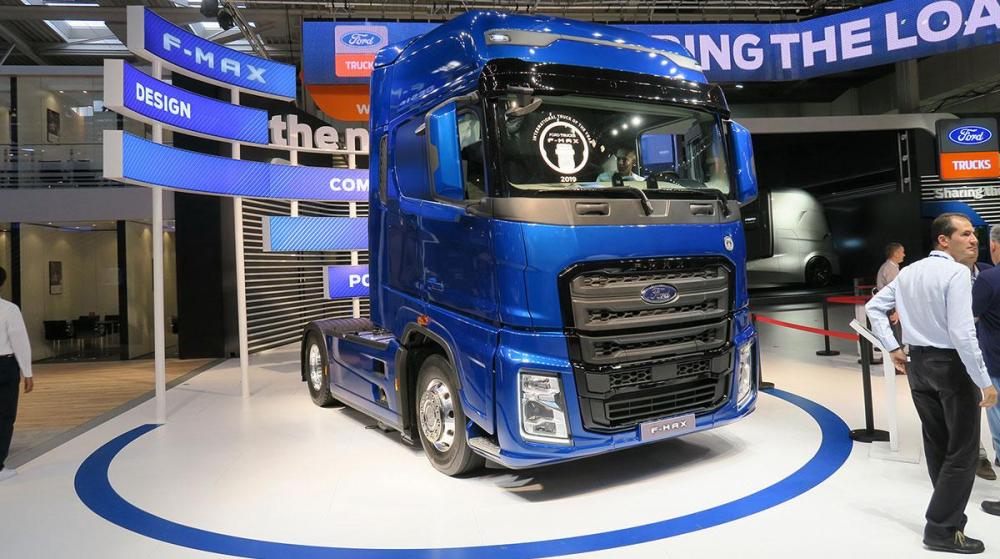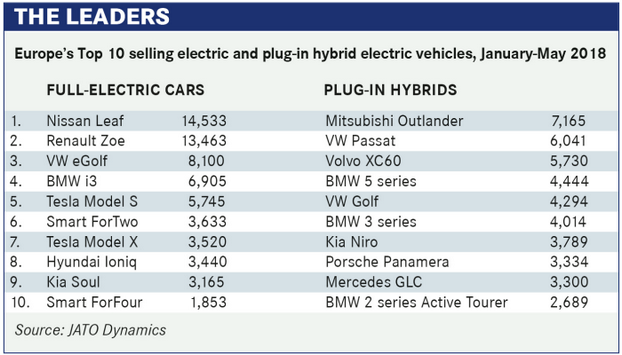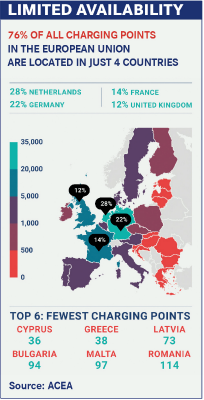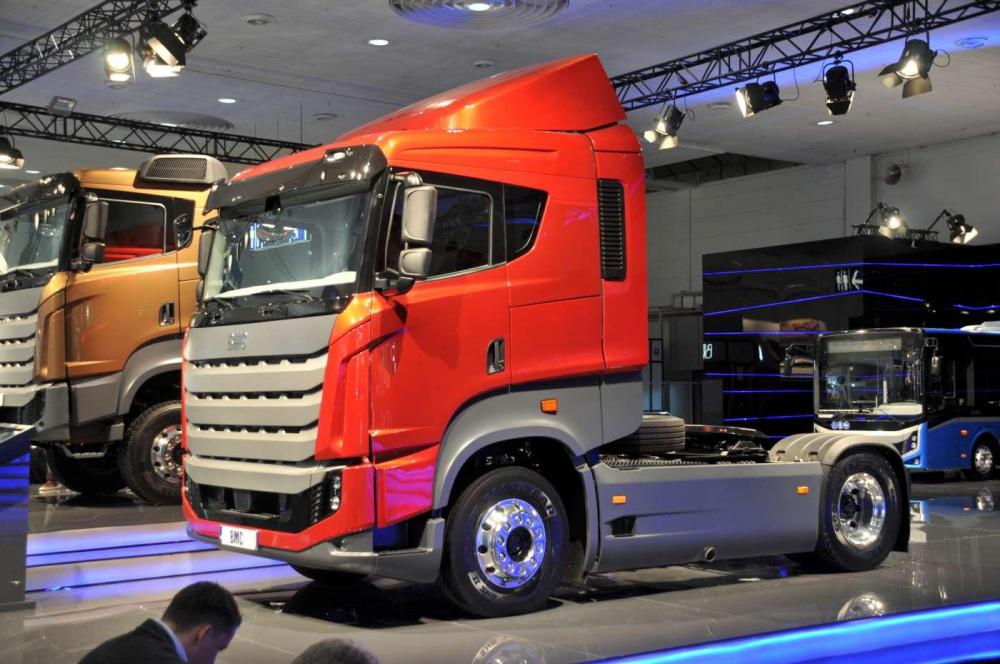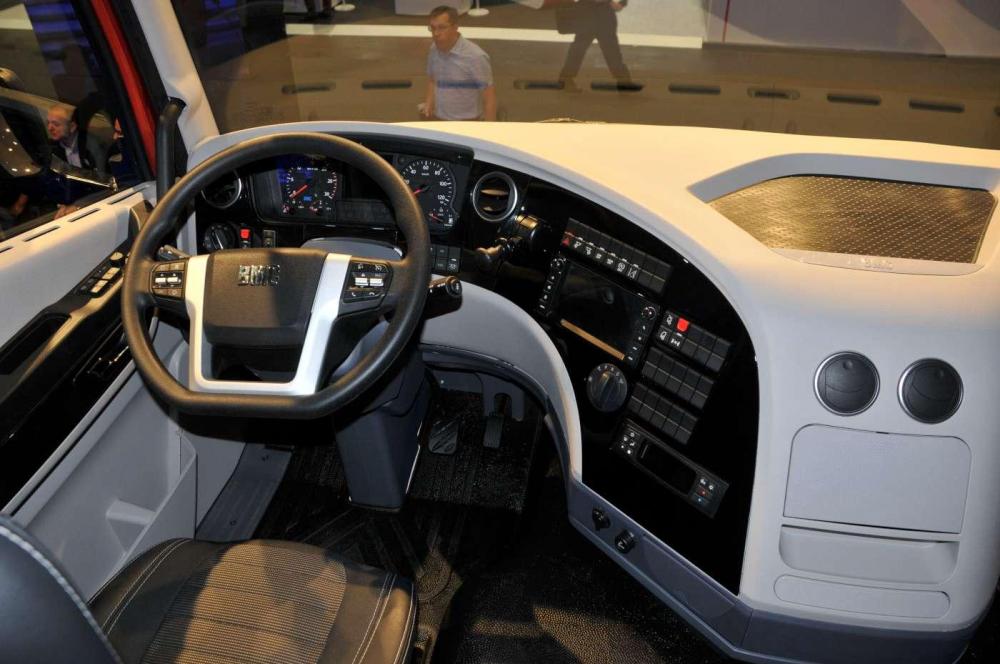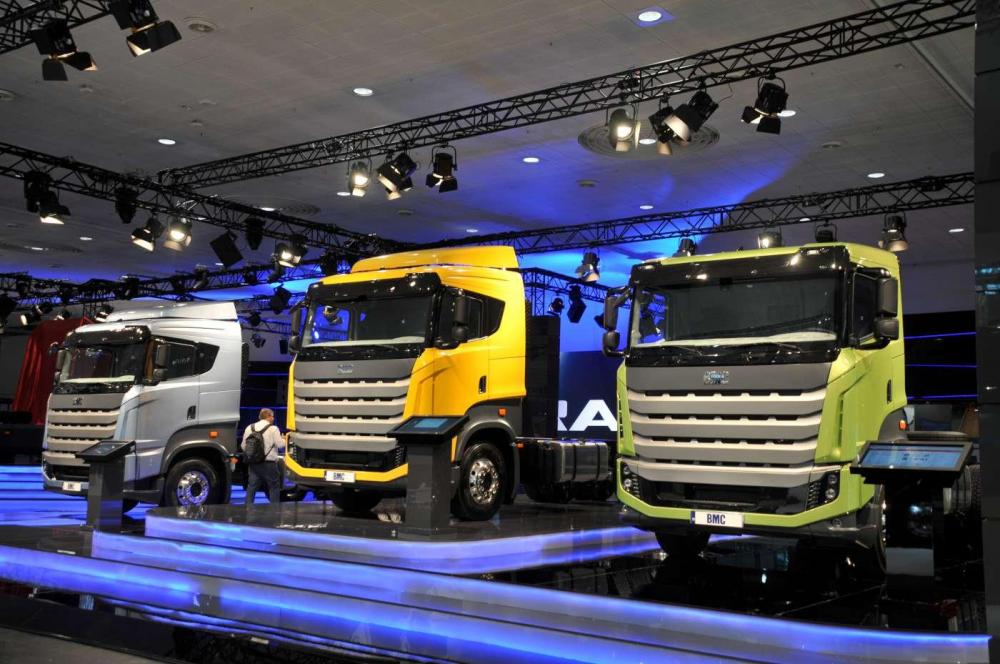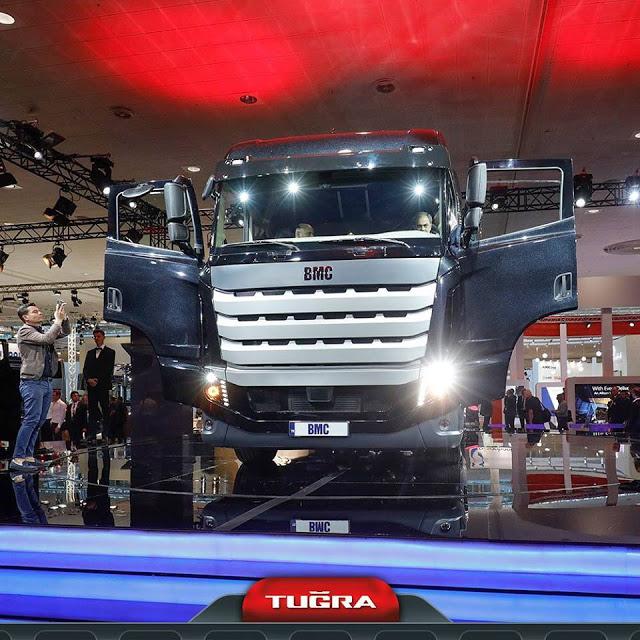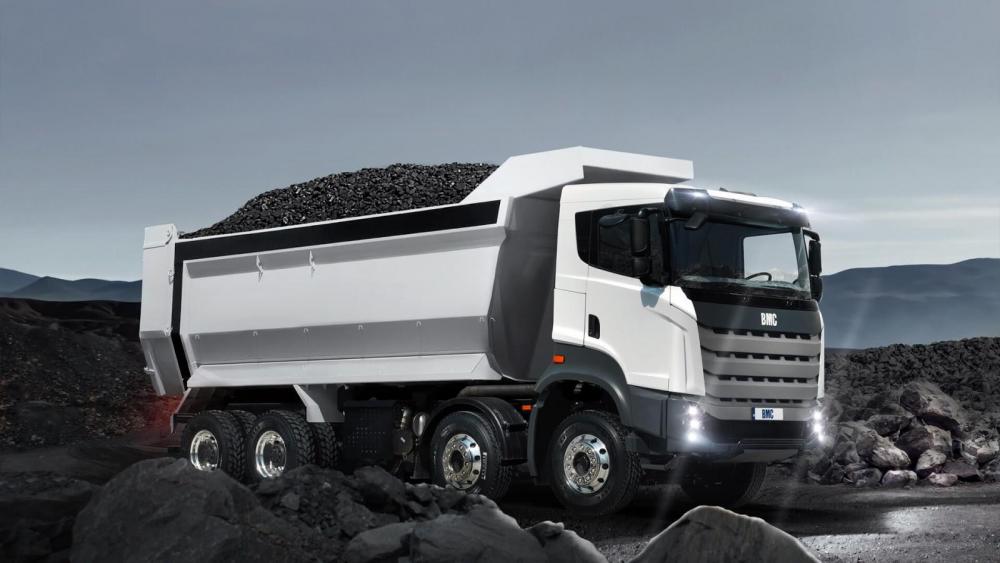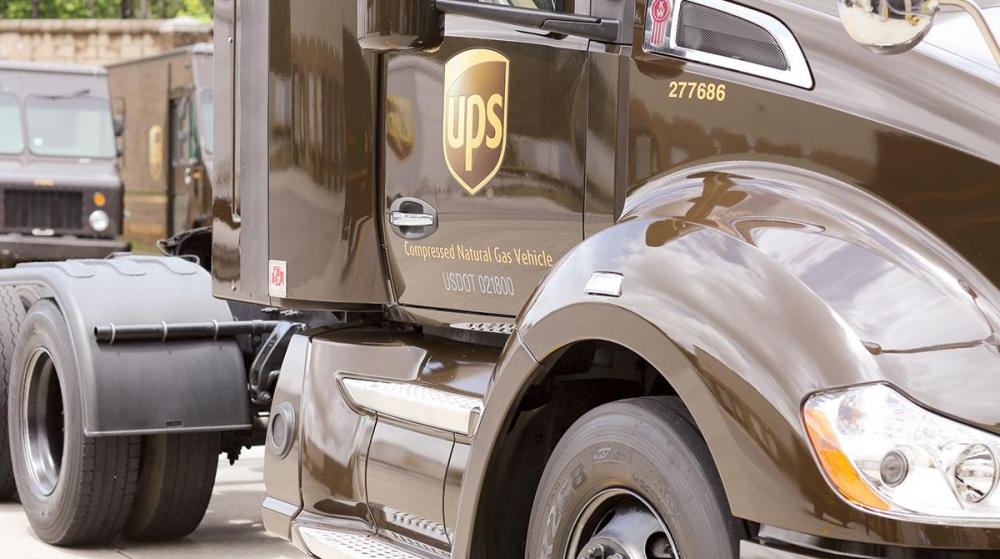
kscarbel2
Moderator-
Posts
18,550 -
Joined
-
Days Won
112
Content Type
Profiles
Forums
Gallery
Events
Blogs
BMT Wiki
Collections
Store
Everything posted by kscarbel2
-
Seth Clevenger, Transport Topics / September 24, 2018 HANOVER, Germany — Ford Trucks offers only light- and medium-duty vehicles in North America, but the brand is aiming to make a splash in the heavy-duty segment in certain international markets. Ford Trucks debuted its F-Max cabover tractor at the IAA Commercial Vehicles show here. The F-Max, which takes its name from Ford’s F Series, will be marketed in central and Eastern Europe, Russia, the Middle East and northern Africa, with aftermarket service also available in Western Europe. The vehicle was designed and tested over the course of five years by Ford Otosan, a manufacturing company based in Turkey that is jointly owned by Ford Motor Co. and Koç Holding. “We developed our new tractor with Ford’s principles of comfort, power, efficiency and technology at its heart,” Ford Otosan CEO Haydar Yenigün said. The F-Max comes equipped with Ford’s 12.7-liter E6D Ecotorq engine. The new truck features a 12-speed ZF automated transmission and drive modes such as eco-mode and power mode to optimize fuel consumption or performance. Ford Trucks is offering a connected-vehicle platform, ConnecTruck, with the F-Max. The service enables remote diagnostics and over-the-air software updates. The F-Max also offers driver-assist features such as adaptive cruise control, predictive cruise control, emergency braking, lane departure warnings, electronic stability control and an adjustable speed limiter device. .
-
Ford paid $90M for Detroit train station, city records show Kirk Pinhom Crain's Detroit Business / September 24, 2018 DETROIT -- The dilapidated Michigan Central Depot in Detroit’s Corktown neighborhood -- which Ford Motor Co. plans to transform into a campus dedicated to electrified and autonomous vehicles -- was purchased by the automaker for $90 million, according to government records. The disclosure on the city's property sales history page puts an end to months of speculation about how much the automaker ponied up to the Moroun family for the vacant building off Michigan Avenue. A purchase price of $90 million puts the purchase price at $150 per square foot for the 600,000-square-foot depot, which has long been seen as emblematic of a city that decayed over decades. In comparison, General Motors in 1996 purchased its Renaissance Center headquarters -- a couple of miles from the train depot -- for $75 million. Dennis Bernard, founder of Bernard Financial Group, a prominent commercial real estate finance company, was surprised by the cost. "DAMN!!!!!," he said in an email to Crain's Detroit Business, an affiliate of Automotive News. Ford finalized the depot purchase May 22, according to public records. The company is seeking nearly $239 million in local, state and federal incentives for its planned $740 million campus in the Corktown neighborhood west of downtown, with the train station as the focal point of the 1.2 million-square-foot project that is expected to bring 5,000 autonomous and electric vehicle technology workers to the area. The company's new Ford Autonomous Vehicles LLC subsidiary will be based primarily at the campus. The 104-year-old depot is expected to be turned into about 313,000 square feet of office space, about 42,000 square feet of residential space spread across 40 or so units, 43,000 square feet of commercial space and 60,000 square feet of event space. A nearby former Detroit Public Schools book depository is expected to be transformed into 205,000 square feet of office space and 20,000 square feet of commercial space. A former brass factory is set to be leveled starting later this year. What will rise in its stead is expected to be a 290,000-square-foot building with 247,500 square feet of office/lab space along with 42,250 square feet of commercial space. .
-
Trump and Immigration (Illegal Immigrants in the US)
kscarbel2 replied to kscarbel2's topic in Odds and Ends
The whole sanctuary city thing is beyond my understanding, entire cities ignoring federal law to harbor illegal aliens. And they're steadfast in protecting these criminals. Anyone who would enter a country illegally............. -
Ford Launches F-Max Tractor for Global Markets
kscarbel2 replied to kscarbel2's topic in Trucking News
They can build it with different cab widths, as other truckmakers do. -
First F model
kscarbel2 replied to james j neiweem's topic in Antique and Classic Mack Trucks General Discussion
https://www.bigmacktrucks.com/topic/30186-macks-powered-by-other-engine-manufacturers/?tab=comments#comment-167969 -
EU electrified car push is driven by rules, not market demand Nick Gibbs, Automotive News Europe / September 22, 2018 Automakers are pouring money into electric vehicles as local and Europe-wide legislation pushes them to electrify their lineups with different combinations of battery technology — whether they want to or not. The small number of EVs available, either full-electric cars or plug-in hybrids, is slowly increasing as the battery technology improves and battery costs decline. This year, Jaguar launched the I-Pace, the first full-electric model from an established automaker with the performance and price tag to challenge Tesla. In the volume sector, Hyundai introduced long-range capability -- up to 480 km (298 miles) -- with the Kona EV SUV. German premium brands are launching their fight back against Tesla - Audi with the e-tron SUV and Mercedes-Benz with the EQC. The choice of high-end, long-range (400 to 500 km) electric cars will expand further when Porsche launches the Taycan sedan. Electric cars are perceived to be image-boosting. Whether that is a result of Tesla's efforts or a backlash against polluting diesels is difficult to say. But over the past 12 months, automakers looking for positive publicity have made bold promises to electrify their global fleets in the midterm. • By 2023, 86 percent of all PSA Group's models will have an electric or plug-in option. • By the end of 2022, Fiat Chrysler Automobiles will have launched more than 30 nameplates with electric drivetrains. • Starting in 2019, every all-new Volvo launched will have some form of electrification. This will include 48-volt mild hybrid, plug-in hybrid and full-electric powertrains. Volvo's headline-generating announcement, made July 2017, inspired many others to follow suit. • Renault plans to launch eight full-electric models and 12 electrified models by 2022. • The Volkswagen Group has announced it will launch 25 electric vehicles by 2020 and plans to sell up to 3 million EVs annually by 2025. • By 2022, Ford will have 16 dedicated battery-electric vehicles globally. • Also by 2022, Daimler will electrify the entire range of Mercedes cars. • Every new Jaguar Land Rover vehicle will be electrified by 2020. • One-third of all Maseratis will be electrified by the mid-2020s. Legislatively driven These bullish announcements suggest an enthusiastic switch to electric, but the reality is somewhat different. For many automakers, the word "electrified" encompasses mild hybrids, which gives standard combustion engines a small electric boost for an equally small decrease in CO2 emissions. From the auto companies' perspective, it's clear that switching to electric is largely a response to legislation rather than consumer demand. In June during FCA's investors' day, where the company revealed its electric ambitions within the new five-year plan for the company, Chief Technical Officer Mark Chernoby described the European Union as the "most challenging regulatory/consumer environment in the world." FCA traditionally had been the automaker least interested in battery power, citing the slim-to-zero returns. Its former CEO, Sergio Marchionne, famously asked consumers in 2014 not to buy its only electric car, the Fiat 500e, because the company lost $14,000 for each one sold. Now, however, FCA is working on a new electric Fiat 500 as part of its wider EV plan. The company had little choice, Chernoby said, describing the fines in Europe for not achieving average CO2 targets by the 2020-21 time frame as "significant." Diesel decline Meanwhile, consumers are abandoning the carmakers' low-CO2 fuel of choice — diesel — as cities across Europe target the fuel to combat emissions problems. In response, FCA plans to drop diesel in Europe by 2021. The EU is encouraging this switch toward EVs. The European Commission has set out proposals for new CO2 targets for 2030 that would force manufacturers to cut fleet average emissions by 30 percent from 2021 levels. Electrification is key to this. The EU has set a benchmark of 15 percent of all sales to be either electric or plug-in hybrid (below 50g/km of CO2) by 2025 and 30 percent by 2030. Any automaker that achieves sales above these targets is rewarded with a higher average CO2 target. "The framework aims to support a gradual transition from vehicles powered by conventional engines to electric vehicles," the European Commission wrote in November. Limited uptake The manufacturers themselves are less keen on being made to switch. "Currently the reality is that the market uptake of electrically chargeable vehicles is low, and this is not due to lack of availability and choice," Daimler CEO Dieter Zetsche said last September. Zetsche was speaking in his role as president of the European auto industry association, ACEA, which continues to press the European Commission to relax the pressure to electrify by softening the 2030 emissions targets. ACEA proposes a 20 percent cut instead. In June, ACEA again attacked the commission over electric cars, warning that "affordability is a major barrier to customers." The manufacturers' group contends that EV growth is occurring only in rich countries such as Norway, where average gross domestic product is twice the EU average. As an example of that barrier, ACEA singles out Estonia, where just 43 plug-in hybrid vehicles were purchased in 2017. "A forced push for electrification could lead to social exclusion in these countries," ACEA wrote in its report, "Making the Transition to Zero-Emission Mobility." The association, which speaks for all European automakers, repeated Zetsche's point about slow acceptance of EVs. "Consumers looking for an alternative to diesel now often opt for petrol vehicles or hybrid ones but are not yet making the switch to electrically chargeable vehicles on a large scale," ACEA wrote. Last year the market for plug-in vehicles was just 1.8 percent of the total market, according to figures from market analyst JATO Dynamics. At its current low rate of growth, ACEA argues, the market share would be 3.9 percent by 2025 and 5.4 percent by 2030. Infrastructure issues ACEA said that the lack of charging stations is holding back sales. It calculates that at least 2 million chargers will be needed by 2025 to service the demand forecast by the EU. Of the nearly 100,000 charging points currently available, ACEA says, 30 percent are in the Netherlands and 22 percent in Germany. Romania, by contrast, has just 116 stations. ACEA Secretary General Erik Jonnaert called on the EU to force its member states to increase the number of publicly available charging points. "Without this, consumers will never be convinced to make the switch to electrically chargeable cars on a large scale," Jonnaert said. The automakers' EV pessimism, as expressed through their European association, contrasts sharply with their public enthusiasm. But analysts and the automakers think the market for plug-in vehicles will grow sharply anyway. The consulting firm AlixPartners forecasts that plug-ins, both battery-electric vehicles and plug-in hybrid EVs, will account for at least 20 percent of European sales by 2025, beating the European Commission's 15 percent benchmark. The VW Group has reached the same conclusion, telling the analyst firm UBS this year that it predicts the split in 2025 will be 12 percent BEV (battery-electric vehicles) and 8 percent PHEV (plug-in electric vehicles). The VW Group consistently has said it thinks a third of its sales will be pure EVs by 2025. The analyst firm LMC Automotive thinks the 2025 figure will be 18 percent, split between 11 percent BEV and 7 percent PHEV for a total market of 3.7 million vehicles. By 2020, LMC estimates, the market for EVs will quadruple to 1.15 million, up from 280,767 last year. It thinks plug-in hybrids will remain ahead at just over half the total before being overtaken in the subsequent five years as BEVs become more affordable and the charging network expands. Massive investments The investment being poured into electric cars is immense. FCA, for example, plans to devote 20 percent of its total capital expenditure budget up to 2022 (9 billion euros or $10.5 billion) to developing electrified vehicles. By 2022, FCA expects 40 percent of its European vehicles to be mild hybrids, 20 percent "high-voltage electrification" (BEVs or PHEVs) and 40 percent nonelectrified. Globally, automakers and suppliers are investing $255 billion in electric vehicles up to 2022, compared with around $25 billion in the previous eight years, AlixPartners has calculated. The money will not just go into the drivetrains but also into trying to make the EV driving experience superior to that of conventional combustion engines -- key to stimulating demand. UBS reports that the first of the new-generation VW electric cars -- the I.D. Neo, arriving in 2020 – will come with augmented-reality head-up display and optional inductive wireless charging. The Porsche Taycan will use an 800-volt system for ultrarapid charging (10 to 15 minutes) and consistent rapid acceleration without sacrificing on performance. Autonomous technology increasingly will be part of electric cars. For example, the BMW iNext SUV, scheduled to be launched in 2021, will be "fully electric, fully connected and also offer highly automated driving," BMW CEO Harald Krueger said in May. 'More expensive' Automakers currently unable to command premium prices will use the high-tech allure of electric cars to persuade buyers to pay extra. "We believe electric vehicles in the future will necessarily be more expensive, so we need to find the target group who are ready to pay more," said Alain Favey, Skoda's head of sales and marketing. "It's a matter of getting the cars so attractive with a content that is so compelling that people will be ready to pay more." Skoda will sell an electric version of its Citigo minicar in 2019 and a production version of the Vision E, built on the new VW Group MEB platform, in 2020. To be successful, automakers must target a different audience, said Christoph Stuermer, global lead analyst at PwC Autofacts. "Trying to sell a different thing to the same kind of people can't work because the properties of battery-electric cars today are worse than for combustion-engine cars," he said. Applying the same marketing is a recipe for failure, Stuermer said. "Electric cars have not been product-managed or marketed in any professional way," he said. "Take the engineers off the piste and let the product managers start doing their job." Stuermer praised the Renault Zoe as being different enough to appeal to this new crowd. "The Renault brand is slightly nonblingy, it has a cool appeal, and it sells like hotcakes," he said. "In most cases, electric-car buyers are not people who like to show off." .
-
Trump and Immigration (Illegal Immigrants in the US)
kscarbel2 replied to kscarbel2's topic in Odds and Ends
The presence of every illegal immigrant in the United States is a slap in the face to every U.S. citizen who brought a spouse and/or child family member into the country legally, following the procedures as laid out by the U.S. Citizenship and Immigration Services (USCIS). -
BMC officially launched its all-new Tugra heavy truck range at IAA 2018. Allegedly Euro-5 and -6 FPT and Cummins engines are available, paired with ZF transmissions. Heading into 2019, this effort doesn't impress. It looks like a Chinese prototype from 15 years ago. I wish them the best of luck though. Good to see BMC back at IAA.....they last attended in 2008. . .
-
Trump and Immigration (Illegal Immigrants in the US)
kscarbel2 replied to kscarbel2's topic in Odds and Ends
Typically, someone with proven finances must sign an Affidavit of Support before a "legal immigrant" is issued an immigration visa to enter the country, assuring that the country will not have to bear any financial burden. -
Trump and Immigration (Illegal Immigrants in the US)
kscarbel2 replied to kscarbel2's topic in Odds and Ends
Reuters / September 22, 2018 The Trump administration on Saturday said it would propose making it harder for foreigners to come to the United States or remain there if they have received or are likely to receive public benefits such as food aid, public housing or Medicaid. The proposed regulation from the Department of Homeland Security would expand immigration officers’ ability to deny visas or legal permanent residency to aspiring immigrants if they have received a range of taxpayer-funded benefits to which they are legally entitled, such as Medicaid, the Medicare Part D low-income subsidy, Section 8 housing vouchers and the Supplemental Nutrition Assistance Program, which is commonly known as food stamps. U.S. immigration law has long required officials to exclude a person likely to become a “public charge” from permanent residence. But U.S. guidelines in place for nearly two decades narrowly define “public charge” to be a person “primarily dependent on the government for subsistence,” either through direct cash assistance or government-funded long-term care. The Trump administration’s proposal is a sharp departure from current guidelines, which have been in place since 1999 and specifically bar authorities from considering such non-cash benefits in deciding a person’s eligibility to immigrate to the United States or stay in the country. The changes would apply to those seeking visas or legal permanent residency but not people applying for U.S. citizenship. “Under long-standing federal law, those seeking to immigrate to the United States must show they can support themselves financially,” Secretary of Homeland Security Kirstjen Nielsen said in a statement to Reuters. “This proposed rule will implement a law passed by Congress intended to promote immigrant self-sufficiency and protect finite resources by ensuring that they are not likely to become burdens on American taxpayers.” If a foreigner is receiving one or more of the public benefits laid out in the proposal when they apply for a visa or residency, that would be a heavily weighed negative factor in their determining their eligibility to come to or remain in the United States. If an immigrant is deemed inadmissible because of the new rule, they might be eligible to post a bond, no less than $10,000, to come into the United States. The overhaul is part of President Donald Trump’s efforts to limit both legal and illegal immigration, an issue he highlighted during the 2016 presidential campaign and that has become an important topic in the 2018 congressional elections. Trump has advocated ending a visa lottery program and some kinds of family-based immigration but many of his desired changes would require congressional action. The proposed regulation, which does not need to be approved by Congress, will be published in the Federal Register in the coming weeks, officials said, the first step toward final adoption. The public has 60 days to comment on the proposal and the agency must consider all submitted comments and could change the regulation before the final version is adopted, likely not for at least several months. The proposal would affect more than 382,000 people per year who obtain permanent residence while already in the United States, DHS said. In addition, hundreds of thousands of people living abroad obtain U.S. permanent residence each year through the State Department, which would likely change its own regulations to match those of DHS when the proposal becomes final. Immigrant advocates have criticized the administration’s plan, which was first reported by Reuters in February when it was in an early draft form, saying that it is an effort to cut legal immigration without going through Congress to change U.S. law. They also believe the rule could negatively affect public health by dissuading immigrants from using health or food aid to which they or their children are entitled. Even the proposal published on Saturday anticipates some of those impacts. If immigrants forego enrolling in public benefits because of the new regulation, it could lead to “increased rates of poverty and housing instability” and “worse health outcomes,” the proposal states. Although the administration’s proposal would be a major change, the version released on Saturday is narrower in scope than previous leaked drafts. It will not penalize immigrants for using home heating aid; the widely used earned-income tax credit; WIC, a federal program that feeds poor pregnant or nursing women and their children; and Head Start, which provides early education to low-income children. Previous versions of the rule would have penalized immigrants for using those benefits. The regulation also would consider only the use of certain benefits by the individual applicant, and not their dependents, including U.S. citizen children. Previous versions of the regulation would have taken into account the use of benefits by an applicant’s children, even those born in the United States, which immigrant advocates said would force people to pull their children out of needed health and food programs. -
First F model
kscarbel2 replied to james j neiweem's topic in Antique and Classic Mack Trucks General Discussion
Remember though, most of the early F-models were not F-700s........they were F-600s (1962-1967). -
Ford Launches F-Max Tractor for Global Markets
kscarbel2 replied to kscarbel2's topic in Trucking News
The F-MAX's Ecotorq 13 features a Jacobs’ "bridge brake". Note the braking power of 544 PS (metric horsepower) / 536 horsepower. 980mm and 1200mm 5th wheel heights, and a 1100mm height option specifically for pulling 2.9 meter tall containers and staying under 4.0 meter overall height requirements. 1,050 litre (277 gallon) total available fuel capacity....nice. Note that Ford Trucks is plating these 4x2 tractors at 42 metric tonnes (92,594 pounds). -
Ford Launches F-Max Tractor for Global Markets
kscarbel2 replied to kscarbel2's topic in Trucking News
Here is the new Ford F-MAX spec sheet (in global market English): https://www.fordtrucks.com.tr/Uploads/Foy/fmax_technical_brochure.pdf -
Ford Launches F-Max Tractor for Global Markets
kscarbel2 replied to kscarbel2's topic in Trucking News
Here is the Ford Trucks global range (all the models). Scroll to the bottom. The columns beginning from the left side: Tractors, Rigids, Vocational/Construction https://www.fordtrucks.com.tr/tr-tr/anasayfa -
Ford Launches F-Max Tractor for Global Markets
kscarbel2 replied to kscarbel2's topic in Trucking News
https://www.bigmacktrucks.com/topic/48202-the-euro-6-ford-ecotorq-motor/?tab=comments#comment-356956 https://www.bigmacktrucks.com/topic/38795-fords-china-heavy-truck-joint-venture-plans-take-off-in-2016/?tab=comments#comment-277516 Available in ratings from 420 to 500 horsepower, I think the Ecotorq 13 (12.7-litre displacement) is the "sweet spot" for this truck. Right now, the 9-litre Ecotorq is offered up to 330 horsepower, so there is a gap between 330 and 420. They had tried the 10.3-litre Cursor 10 and expected FPT (Fiat Powertrain Technologies) to provide them with the new 11.1-litre Cursor 11 replacement, but I heard Iveco complained. Since most operators these days want a minimum of 420hp, I think the Ecotorq 13 is fine. Yes, the Ford F-MAX is a new "clean sheet" design. The Euro-6 engines use SCR exclusively, because MEGR* only works satisfactorily up to Euro-5. * Massive Exhaust Gas Recirculation - EGR levels from 35% to 50%. -
Bob, the percentage of Dearborn-made investment in the Ford-Otosan depends on the project. For example, the Transit range receives massive Ford investment because the majority of that product is exported to Ford country markets worldwide. The investment in Cargo, which is massive, including the ramping up of China production in which Ford Dearborn is the Chinese truckmaker's partner, has also varied. Ford-Otosan largely took over R&D for Brazil a few years back, because Dearborn designated Ford-Otosan its global commercial truck design base. The folks at Otosan are enthusiastic, but none of this would have been possible without Dearborn money and Bill Ford's support. Ford is creating a vertically-integrated truck platform with Ford engines, transmissions and axles. That engineering costs serious money, which speaks volumes about the level of commitment.
-
-
Ford Launches F-Max Tractor for Global Markets
kscarbel2 replied to kscarbel2's topic in Trucking News
-
First Time for a Truck Made Outside of Europe
kscarbel2 replied to kscarbel2's topic in Trucking News
-
The Ford F-Vision speaks volumes about the company's commitment to the heavy truck segment. This is a serious, highly advanced concept vehicle. I myself am extremely impressed. Naturally, a concept is a "best guess".....made in the present. "Big Red" was another brilliant and extremely serious concept from Ford Truck. We didn't get there altogether, but have no doubt that a great deal was learned. That Ford has produced a futuristic concept truck on the same level as the examples from DAF, M-B, MAN, Scania, Iveco and Volvo should make Americans very proud.
-
Phil Romba, Transport Topics / September 21, 2018 Early Adopters Are Reporting Operational — and Environmental — Benefits I’ve speculated in the past that fleets would tire of natural gas engines, particularly as legislators or regulators began taxing the alternative fuel on the same basis as diesel. Several years ago, it seemed to me that fleets invested in natural gas just to check the proverbial box on a corporate mandate about sustaining the environment. But early adopters of natural gas engines have demonstrated some operational and maintenance advantages over today’s diesel engine: Prices and the supply of diesel will continue to be volatile, likely keeping natural gas cheaper than diesel for the foreseeable future. And the complex maintenance of the emissions-control systems on today’s diesel engines will remain costly. A case for natural gas engines was given a boost recently when Cummins Inc. voluntarily recalled 500,000 medium- and heavy-duty engines for a failed catalyst in the selective catalytic reduction, or SCR, emissions-control system. Natural gas engines do not require SCR. An early adopter of natural gas engines, UPS Inc. announced in June another $130 million investment in natural gas vehicles, including 400 on-highway tractors. According to Bill Brentar, UPS senior director of maintenance and engineering, natural gas engines have shorter oil change intervals than diesels; and, unlike diesels, they require periodic valve adjustments and spark plug replacement. But they do not require the “expensive emissions equipment maintenance,” such as the diesel particulate filter and regeneration. Nor, he added, do natural gas engines require diesel exhaust fluid. “Up to this point, the pros and cons appear to be balancing out,” he said. UPS does not see a “measurable difference” in maintenance costs between natural gas and diesel engines. However, the natural gas trucks “run higher average miles, so our perception today is, they are about equal.” AJR Trucking in Rancho Dominguez, Calif., also made news in May when it put in service the first of 20 Kenworth T680 day cabs powered by Cummins Westport’s 12-liter ISX12N natural gas engine. According to Cummins Westport, exhaust emissions for this engine are 90% lower than the current standards for diesel exhaust. Jack Khudikyan, co-owner of AJR, said a yearlong test provided the data the fleet needed to confidently bid on a contract with the U.S. Postal Service, knowing higher maintenance costs would be offset by fuel costs that are about half of diesel. Depending on the duty cycle, he said compressed natural gas engine maintenance costs can be 15% higher than those for diesel. “Spark plugs must be changed every 60,000 miles or 1,000 hours at a cost of $450,” he said, “and valves must be adjusted at the same interval for a cost of $550.” One significant drawback to a CNG fuel system is the added weight of tanks. AJR Trucking specified tanks that hold the equivalent of 167 gallons of diesel, giving the new tractors a range of about 700 miles. The tankage adds 4,200 pounds to the weight of each tractor. UPS also experienced a weight gain on tractors using CNG. But in addition to the 2,500-pound increase, day-cab tractors with a CNG fuel system require a second drive axle to accommodate the weight. The fleet can operate single-drive-axle tractors when liquefied natural gas (LNG) is used because that fuel system is not as heavy. When UPS decided in 2012-13 to deploy natural gas engines, Brentar said the company projected maintenance costs for natural gas engines would be equal to its diesel-powered trucks. And with parity of maintenance costs, use of natural gas “would provide emissions and sustainability advantages and also provide for lower fuel costs over the long term.” Brentar added, “Those assumptions and estimates have been validated up to this point and there is nothing in our data or experience to suggest that is going to change.” Time and these experiences have changed my mind about natural gas engines in heavy-duty applications. Fleets have adopted them because they provide operational — and environmental — benefits. .
-
Trump and Immigration (Illegal Immigrants in the US)
kscarbel2 replied to kscarbel2's topic in Odds and Ends
They're so-called "economic migrants". Most don't want to adopt the culture of the European country they're in.....they only want to make money there. -
I'm going to preface this comment by saying it is based on the news we're presented with. My thoughts are based on that. I personally know no facts. First, the US State Department is demanding that German companies leave Iran, including Volkswagen, after just having allowed them back in. I question whether our government has the right to make demands upon non-US companies in other sovereign countries. That's arguably a stretch that much of the world won't buy in to, and it can doesn't come across well in the PR department. Secondly, the US yesterday announced sanctions on China for having purchased ten SU-35 fighters and S-400 surface-to-air missiles. How can we tell another sovereign country who it can and can't purchase from? The fighters were actually purchased in 2017, and nothing was said then. The S-400 missile system has also been purchased by our NATO partner Turkey......who was not sanctioned. Several other countries which the US State Department refers to as allies, including India and Saudi Arabia, are allegedly considering S-400 purchases. Having a tariff show with China is one thing they will tolerate, but the relationship becomes chilly real fast when you sanction them.....not a good thing for two deeply intertwined countries that are attached at the hip economically. I humbly suggest that history has proven, elbowing other countries and their companies doing business outside the US around the globe, and this business of sanctions, has rarely achieved the targeted results. I think prompt confrontation over concerns is excellent, but then it's "how" you go about it that determines a mutually agreeable outcome. The countries of the world are never all going to be best friends. But we can learn to reasonably get along, particularly the larger ones which have the ability to lead by example. Every human being in every country is here on earth for a very short time*.....there are far better ways to using our brief existence rather than fighting. No matter where I travel around the world, I see mostly good folks who want to live in peace. http://www.autonews.com/article/20180920/COPY01/309209976/vw-rejects-trump-envoys-take-on-iran-pullout https://www.reuters.com/article/us-usa-russia-sanctions/us-sanctions-china-for-buying-russian-fighter-jets-missiles-idUSKCN1M02TP https://www.france24.com/en/20180921-usa-sanctions-china-buying-russia-jets-missiles Now, Moscow says Washington is "playing with fire", as Beijing demands we immediately revoke the sanctions. The Chinese and Russians don't like or trust each other. However, they will become friends of convenience. Do we really want to take actions that pair them up? Of course not. We're pushing them down a dead-end alley.....what happens next could be very ugly. * The world is approximately 4.54 (± 0.05) billion years years old. Mankind has only been on earth about 200,000 years. The average age of death is about 78. Considering the earth's age versus our time here, it's like checking into a hotel for a few seconds. In essence, we're merely guests here for a very short time. Rather than fighting, spending trillions to destroy ourselves, we should unite and invest our time, money and effort in a harmonious future.
-
DAF: 90 years of innovative transport solutions
kscarbel2 replied to kscarbel2's topic in Trucking News
Not the main reason. The engine was a bonus. After decades of trying to sell Kenworth, and to a far more limited extent Peterbilt (South Africa) in global markets, Paccar decided the DAF opportunity......being able to buy a famous brand that was nearly bankrupt for a modest amount of money, was a solid strategy towards becoming a global player. They couldn't accomplish that with the Foden and Leyland brands, but the DAF brand had the potential to reach the goal.....and it did.
BigMackTrucks.com
BigMackTrucks.com is a support forum for antique, classic and modern Mack Trucks! The forum is owned and maintained by Watt's Truck Center, Inc. an independent, full service Mack dealer. The forums are not affiliated with Mack Trucks, Inc.
Our Vendors and Advertisers
Thank you for your support!


